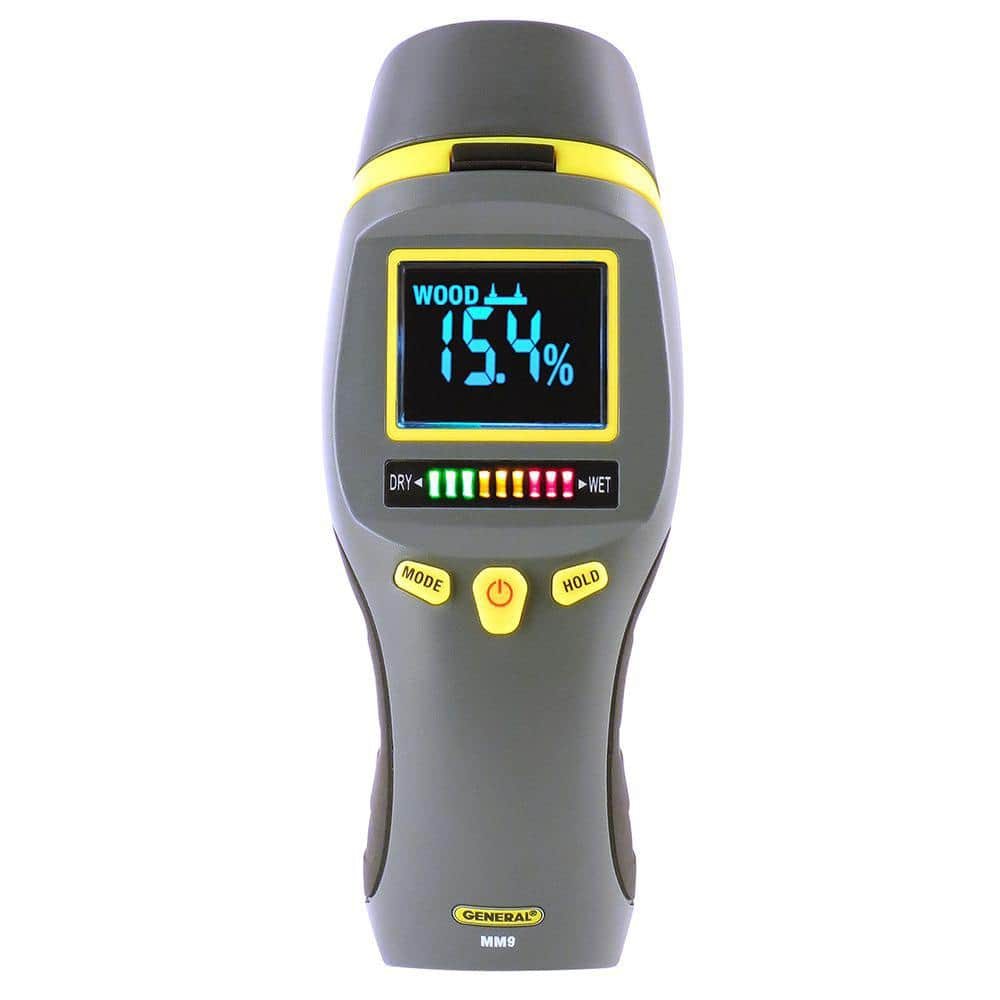The Science Behind Moisture Meters: Exactly How They Work and Why They're Vital
The Science Behind Moisture Meters: Exactly How They Work and Why They're Vital
Blog Article
Explore the World of Moisture Meters: Everything You Required to Know
In the world of moisture meters exists a world of precision and functionality that usually goes undetected. Understanding exactly how moisture meters run, the different kinds offered, and their varied usages can shed light on their value in ensuring top quality and performance.
Just How Moisture Meters Work
Moisture meters operate by determining the electrical conductivity or capacitance of materials to establish the dampness web content existing. These meters are indispensable tools throughout various markets, including building, woodworking, and agriculture. By utilizing various techniques such as pinless or pin-type modern technology, dampness meters provide exact readings that aid experts make notified decisions.
Pin-type dampness meters function by inserting the sharp pins into the material being evaluated. The electrical conductivity in between the pins is after that determined, with higher wetness levels bring about raised conductivity. Moisture Meter. On the other hand, pinless dampness meters use electro-magnetic signals to check a bigger area without creating any type of damage to the product's surface. These meters are perfect for promptly examining moisture levels in huge areas or finished products.
No matter the approach made use of, wetness meters play an important function in preventing concerns such as mold and mildew growth, architectural damages, or product issues triggered by excess moisture. Understanding just how these meters work is important for ensuring the top quality and integrity of products in numerous applications.
Kinds Of Moisture Meters
Offered the crucial role dampness meters play in various sectors, it is vital to understand the various types readily available to professionals for properly evaluating dampness levels - Moisture Meter. There are largely two primary kinds of wetness meters: pinless and pin-type wetness meters

On the various other hand, pinless dampness meters utilize electro-magnetic sensing unit plates to scan a bigger location of the product without creating any damage. This kind is appropriate for rapidly scanning large areas and is commonly utilized for floor covering, walls, and ceilings. Pinless meters are hassle-free for taking readings on completed surface areas without leaving any noticeable marks.
Both kinds of wetness meters have their benefits and are chosen based on the details requirements of the task at hand. Comprehending the distinctions in between these types is vital for professionals to make precise dampness assessments.
Applications Across Industries
Building and construction professionals count on wetness meters to analyze the wetness degrees in building products like timber, drywall, and concrete, which is crucial for preserving architectural integrity and avoiding issues like rot or mold and mildew. The flooring sector utilizes dampness meters to measure the wetness web content in subfloors before setting up numerous flooring treatments, avoiding pricey damages due to excess wetness. In the food sector, dampness meters are used to keep an eye on and control moisture levels in products such as grains, nuts, and dried out fruits to maintain freshness and top quality.
Tips for Using Wetness Meters
When measuring the moisture material in different products,Make use of the dampness meter's calibration settings to ensure precise readings. Calibration is vital for the correct performance of a moisture meter. Before each use, it is recommended to inspect and change the calibration settings according to the certain product being checked. In addition, see to it the meter is readied to the proper dampness array for the product you are gauging to get one of the most specific outcomes.
When making use of a pin-type wetness meter, place the pins to the suitable depth advised for the product being checked. This guarantees that the moisture analyses are extracted from the right depth within the material, giving a much more precise representation of its dampness web content. For pinless wetness meters, remember to maintain correct contact with the material's surface area to Full Article get dependable readings.
On a regular basis check and change the batteries in your moisture meter to protect against incorrect analyses because of reduced power. When not in use to extend its life-span and preserve its precision, Shop the meter in a dry and risk-free area. By adhering to these suggestions, you can maximize the efficiency of your dampness meter and obtain exact dampness content measurements throughout various materials.
Maintenance and Calibration
To make certain the accuracy of moisture material dimensions, regular maintenance and calibration of the wetness meter are crucial steps in its appropriate performance. Upkeep entails keeping the moisture meter cost-free and clean from debris that might impact its analyses. It is very important to follow the producer's guidelines for cleaning up to avoid damages to the tool. Additionally, regular calibration is required to validate the accuracy of the analyses. Calibration changes the go to this web-site dampness meter to guarantee that it offers constant and trusted results.
Calibration should be performed occasionally, specifically if the wetness meter is utilized frequently or in critical applications where precise dimensions are needed. Numerous moisture meters feature calibration devices or can be calibrated by professional solutions. Moisture Meter. It is suggested to keep a log of calibration days and results to track the efficiency of the wetness meter over time. By calibrating the dampness and preserving meter frequently, users can rely on the accuracy of the moisture web content measurements obtained.
Final Thought

In final thought, dampness meters play an essential function in numerous sectors by accurately determining the wetness web content of materials. Comprehending exactly how these tools More about the author function, the different types offered, and correct upkeep and calibration are essential for acquiring trustworthy outcomes. Whether in farming, building and construction, or production, making use of moisture meters assists guarantee quality assurance and effectiveness in procedures.

In conclusion, dampness meters play a critical duty in different markets by accurately gauging the dampness material of materials.
Report this page